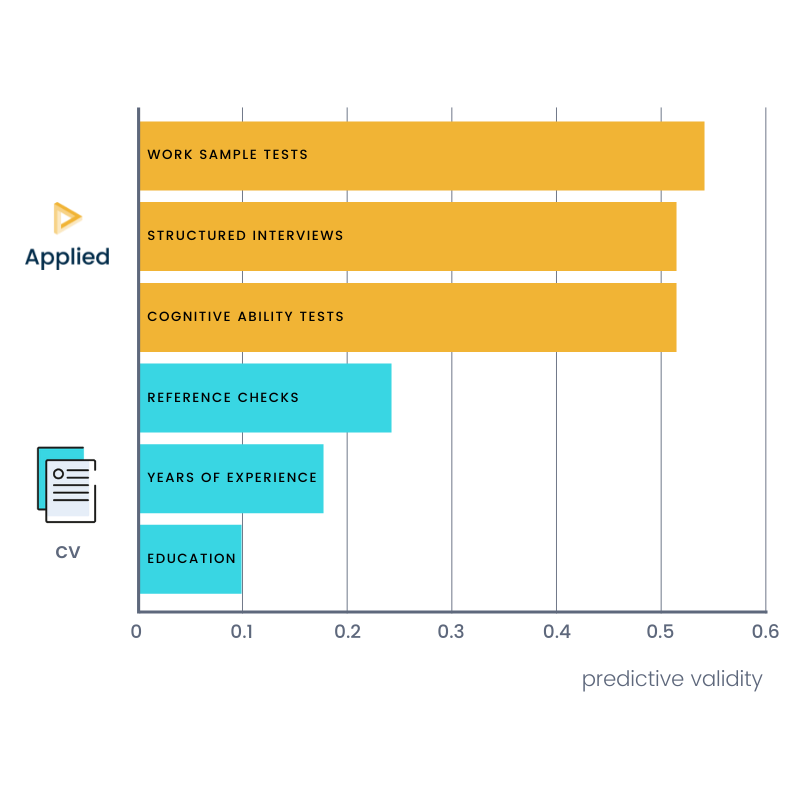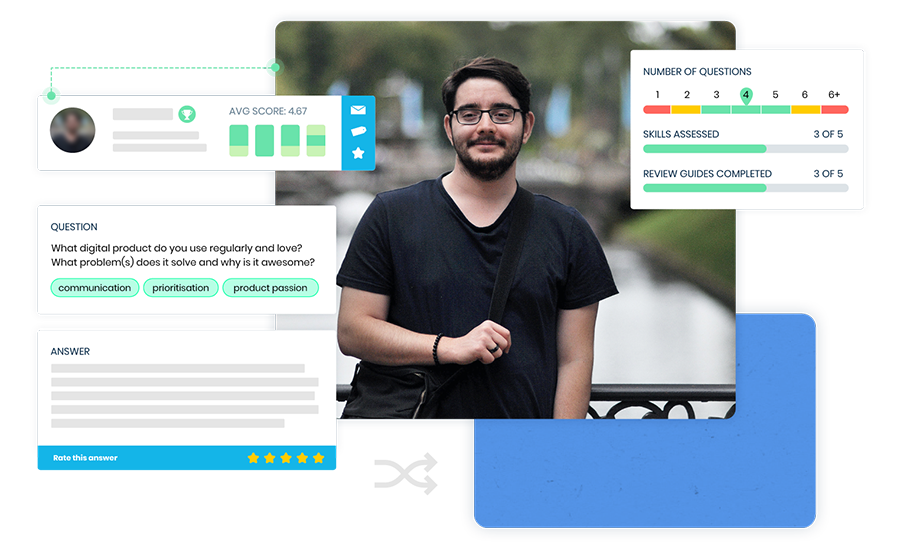.png)
An Applicant Tracking System (ATS) can be a serious investment, especially if you're in a smaller business... but talent acquisition is one of the most important functions of a business - you can't deliver on your organisation's vision without talented people on board to help execute it.
If you're trying to sell your organisation on the ROI of ATS software, we wrote this rough-and-ready guide to applicant tracking system benefits to help you make a convincing case.
10 Applicant tracking system benefits
1. Automated job board publishing
An applicant tracking system will automate job board posting so that you don't have to waste time copying and pasting your advert across multiple job boards.
Job postings aren't cheap. For a single, 30-day job posting, you'll likely pay around $200-$300.
So, by tracking which job boards bring in which candidates, you can make sure you're only spending on the job boards that actually work.
If you're using an applicant tracking system like Applied, you can track both the diversity and performance of candidates to see which job postings generate the highest-performing or most diverse set of candidates.

2. More inclusive job descriptions
Whilst most applicant tracking systems will enable you to write and post job descriptions, only some of them will help you optimise your language to attract bigger, more diverse talent pools.
Whether you're aware of it or not, the language you use in your job descriptions can have a direct impact on the size and diversity of your candidate pool. Things like gendered language, high reading burden and excessive requirements can measurably decrease the volume of candidates who apply.
This is why we built our Job Description Analysis Tool - to help you identify and replace unnecessary words, phrases and requirements that might be holding your job descriptions back.

Here are some of the outcomes you can expect from optimising your job descriptions:
- 49:51 ratio of male to female applications when job descriptions are neutral-coded.
- 1.4x more likely to hire a female with feminine-coded job descriptions.
- 10-15% increase in the volume of applications.
3. More streamlined CV screening
The screening stage can be one of the most laborious parts of the hiring process.
Instead of manually sifting piles of paper CVs, most recruitment software platforms will allow you to automatically parse candidates' CVs so they can be viewed from a single, centralised source.
The Applied Platform takes this a step further with our CV Scoring Tool...
Instead of making gut-driven shortlisting decisions or waiting for something to 'jump out' at you, our structured 'focus questions' give you objective criteria to score candidates against.
This isn't just a fairer way of screening potential candidates, it's also more accurate with tangible data to back up your decisions. So, whatever system you choose to go with, we'd strongly recommend giving yourself a set list of questions to score CVs against.

4. Better quality of hire
Not all applicant tracking systems were created equal...
Some systems will completely transform the way you assess candidates, whilst others simply provide a slightly more efficient way of doing the same old CV/interview-based hiring process.
So, when shopping around for an applicant tracking system, it's worth looking at what they offer in terms of assessments.
If you're serious about improving your quality of hire, you'll want a platform that has predictive assessments.
Predictive validity is a measure of accuracy used in science and psychology. It's a way of quantifying how accurately a test can predict future outcomes.
So when we talk about predictive assessments in the recruiting process, these are assessments that have been proven to predict a candidate's future job performance.
Studies on predictive validity can take years to produce... but we can look to the Schmidtt-Hunter Meta-analysis as a rough guide to what works.

As you can see above, relying solely on background information just isn't very effective when it comes to predicting how someone might perform should they get the job.
So, if quality of hire is an issue for you, you'll want to focus on software that provides some kind of skill-based assessment (and ideally structured interviews too).
Applied, for example, uses work sample questions directly test the skills needed for the job.
They take small parts of the role and ask candidates to either perform or explain their approach to them - so candidates can showcase their skills in the exact context they'll be used in.
Here's a real-life example for a Sales role:
At Applied, the majority of leads that you speak with will come via inbound. Talk through the process you'd take a warm lead through from an initial call to closed/won. In your answer, feel free to reference any sales process or methods you've used.
By simply using a more predictive assessment method to screen candidates - organisations using Applied tend to see 3x more suitable candidates at the interview stage.
Cognitive tests can also be helpful, especially if you're dealing with a large applicant pool.
However, some tests are better than others.
The problem with the majority of cognitive or personality tests is that they don't assess the exact skills needed for the job.
You may be able to show that someone has a certain set of characteristics, but this doesn't necessarily mean they'll be the ideal candidate.
This is why we created Mapped - a filler-free cognitive assessment designed by people doing real analytical jobs in top consulting and finance firms. We worked with investment bankers, strategy consultants and behavioural scientists to build assessments that hone in on the critical skills needed for demanding analytical and commercial roles

5. Structured interviews
The more uniform your interviews are, the more accurate they'll be.
One of the benefits of ATS recruiting benefits is that it gives you a centralised platform to objectively compare candidates and build a more collaborative hiring process.
Your typical ATS will allow you to invite team members to interview candidates and collate their scores.
Applied, for example, allows you to score candidates using a simple 1-5 star scale, and create criteria for your recruiting team to score against.
These scores are then averaged out within the Applied Platform and displayed on your candidate leaderboard.

6. Data-driven decision making
One of the most universal benefits of ATS recruiting software is being able to data-proof your entire recruitment process.
In order to reliably identify quality candidates, you need to be able to objectively score and compare them.
By having a single, centralised system for managing candidates, you can make more fair, data-driven decisions.
No more gut instinct = no more bad hires. Compared to a national average of ~80% across the UK, 93% of candidates hired through Applied are still in their job a year after joining.
Being able to give candidates impartial, performance-based scores can also help fill new roles using those who are already in your candidate database - some ATS platforms will even give you the option to tag qualified candidates who were unsuccessful for future roles.

7. Reduce bias and improve diversity
Are diversity and inclusion a priority in your recruitment strategy?
If so, you'll want to make sure you opt for an ATS that offers basic bias-reducing features like anonymisation and job description optimisation.
No matter how pure our intentions may be, even the most experienced hiring managers are prone to unconscious biases.
All humans are subject to biases that affect our judgment.
Instead of investing in bias training (which has been proven to have a fairly limited impact on actual behaviour) or just trying to 'do better', anonymising candidates and directly assessing skills will result in a measurable improvement in diversity.
How do we know this process works? Well, organisations using Applied generally see 3-4x more candidates from an ethnic minority background.
If you reduce the impact of bias through anonymisation and test for skills rather than credentials, diversity will increase over time.

8. Automate your recruitment process - no more Excel
One of the key benefits of an applicant tracking system is automation.
Repetitive tasks like filling out excel sheets, sending reminder emails and interview scheduling can all be automated using nearly any applicant tracking system on the market.
Freeing up time spent on tedious tasks such as collating scores, sending reminder emails and rounding up your hiring team can save you hours every week to spend on what matters - how customisable your triggers and candidate communication is will depend on what software you're using.
Although this number may vary depending on which ATS you're using and how robust their automation is, Applied customers report a 66% reduction in time spent hiring.

9. Easy tracking and reporting
Without recruiting software, manually reporting on things like cost-per-hire, diversity and efficiency can be extremely time-consuming.
Even though any reporting features are better than none, recruiting analytics is still an area in which meant platforms fall flat.
A quick glance at the reviews of the most popular ATS platforms will tell you that users tend to struggle when it comes to easily generating reports.
Either the process is too complex or lacking in options around diversity and candidate quality.
We designed Applied's analytics suite to be as straightforward and useful as possible. Access real-time reports and download diversity and performance data whenever you need them, to optimise your recruitment funnel and improve ROI.

10. Enhanced candidate experience
Attracting larger talent pools doesn't need to cost the earth if you can design a candidate experience people genuinely enjoy and recommend.
Sure, staying on top of your candidate journey and sending notifications to candidates will help...
But if your assessment process itself isn't enjoyable, you're unlikely to have a positive candidate experience overall.
Candidates rate the Applied process 9/10 on average - this is including those who were unsuccessful.
How did we achieve this? It turns out that candidates appreciate being given a chance to show off their skills, whilst being kept anonymous.
The other pillar of our candidate experience is feedback.
Most organisations don't give feedback to candidates. So, if your ATS allows you to automate this, you're already ahead of your competition.
Since The Applied Platform collects unbiased, performance-based throughout the entire hiring process, we're able to ensure every candidate receives transparent, actionable feedback about where they excelled and where they might've fallen short.

About Applied - the ethical & predictive recruitment platform
Applied was born out of the UK Government’s Behavioral Insights Team to take the guesswork out of your talent acquisition and make the process more equitable for candidates.
Assessment accuracy and fairness are at the core of the Applied Platform - so you can identify genuine talent using only the most ethical, science-backed methods.

Start transforming your hiring now: book in a demo.


.png)

.png)

